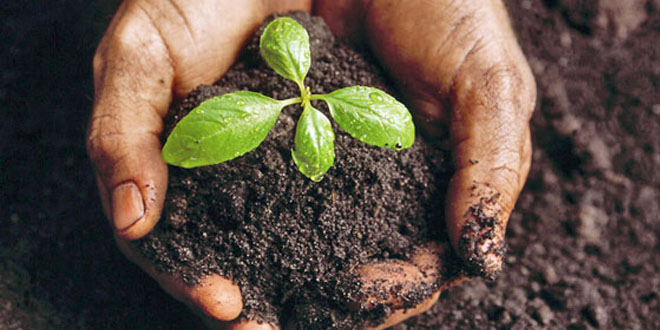The National Bureau of Statistics has released Nigeria’s Consumer Price Index (CPI) and Inflation Report for October 2020. In this report1 dated 16th November 2020, the country’s current food inflation rate stands at 17.38%, up by 0.72% points and 4.32% higher month-on-month as compared with 16.66% in September. The report reveals that increase in prices of bread, cereals, potatoes, some tubers, meat, fish, fruits, vegetables and beverages led to the rise in food index for the month under review.
In October 2015, Nigeria’s food index was 10.1%2, implying a steady increment by about 7.28% points and marginally by approximately 72% within a five year period (2015 till date). Conversely, in October 2019, the index further increased to 14.09%,3 implying that between October 2019 and October 2020, Nigeria’s food index rose by 3.29% points and 23.35% marginally.
Before the release of the current CPI report, the prevalent hike in prices of food items which I consider a realistic expression of figures published by statisticians, has gained widespread attention across the country. This hike is influenced by factors such as activities of bandits in the North-West, general insecurity and reported cases of flood across the country, hoarders reserving food in speculation of the usual heightened demand during Christmas festivities, disruptions in the food supply chain, as well as the effects of the COVID-19 pandemic. Amidst inexhaustible challenges, many farmers produced less this season, driving food inflation higher before the 2021 harvest season4.
Already, experts report a looming food crisis in the country exit 2020 . The UN warns of “famines of biblical proportions” in the coming year, adding that parts of Burkina Faso, Nigeria, South Sudan and Yemen are approaching levels of critical hunger5. This implies as always that issues affecting food production and supply chain need to be urgently addressed.
In Nigeria today, the prices of many food items have either doubled or more than doubled in price. For example;
|
FOOD ITEM |
PRICE IN 2020 Q1 (NGN) |
PRICE IN 2020 Q4 (NGN) |
% ↑↓ |
|
50Kg Bag of foreign rice |
26,000 |
34,000 |
30.7% |
|
1 Bag of sweet potatoes |
3,500 |
10,750 |
207% |
|
1 Bag of onions |
5,000 |
55,000 |
1000% |
|
1 Sachet of tomatoes |
50 |
150 |
200% |
|
1 mudu of dry paper |
800 |
1000 |
25% |
|
1 mudu of beans |
325 |
625 |
92% |
Source: Author’s personal experience/one-on-one interactions with traders in some markets in parts of Northern Nigeria
In October, the #endsars protest which began as a peaceful demonstration by Nigerian youths calling for an end to police brutality and bad governance drifted into the vandalisation of government and private assets by hoodlums as well as the looting of COVID19 palliatives by hungry Nigerians. While the looting of palliatives was met with mixed reactions, I consider it a true representation of the Nigerian State, viz-a-viz failed structures and systems, weak institutions, deprived citizens, high rate of hunger and poverty and so much more. I also consider it a true reflection of the prevailing food inflation rate amidst so much hardship in the country. Sadly, the gap in income level of many Nigerians and prices of food in the market continues to widen, causing more citizens to struggle for survival.
Therefore, in view of the fact that these prices have been predicted to rise steadily, it has become critical to declare a state of emergency to reposition the Nigerian agricultural sector. In my article on food inflation published in June 20206, one major solution proffered was the need to look inwards. Strengthening local capacity across various agricultural value chains is key!
The solution is not in borrowing money from Brazil7 to fund food production, at least not yet. Until Nigeria’s agricultural sector is repositioned to address real-time issues, the government might just be borrowing to fill the pockets of some greedy, hungry and short-sighted Nigerians. In addition, there is the need to enhance the capacity of farmers in line with global best practices for sustainable agricultural intensification as well as strengthen the capacity of institutions saddled with promoting agriculture. This will include charging government agencies to deliver on their mandates amongst numerous sustainable approaches.
In conclusion, it is imperative to add that looking inwards also includes growing a fraction of what we eat as individuals and family units. Let’s grow our pepper, herbs, vegetables, maize, beans, groundnut and even tubers depending on available land space, bearing in mind that some of these food items can be planted in containers. By doing this, we would be adopting a holistic approach towards promoting sustainable food systems that will ensure food is available and affordable for all Nigerians.
References
National Bureau of Statistics (2020): Consumer Price Index October 2020. It can be accessed via https://nigerianstat.gov.ng/elibrary
National Bureau of Statistics (2015): Consumer Price Index October 2015. It can be accessed via https://nigerianstat.gov.ng/elibrary
National Bureau of Statistics (2019): Consumer Price Index October 2019. It can be accessed via https://nigerianstat.gov.ng/elibrary
The Green Investment Club (2020): There’s honestly no way to say this. Customer weekly newsletter delivered on 12/11/2020
The Hill (2020): UN warns of “famines of biblical proportions” within the next year. Online newspaper publication by Joseph Guzman on 16/11/2020. It can be accessed via https://thehill.com/changing-america/respect/poverty/526146-un-warns-of-famines-of-biblical-proportions-within-the-next
Grow4Peace (2020): Food Inflation: The Impact of COVID-19 on Food Demand and Supply in Nigeria. An article published by Ogbole Esther on 08/06/2020. It can be accessed via https://www.grow4peace.co.uk/2020/06/food-inflation-impact-of-covid-19-on.html
Premium Times (2020): What you need to know about Nigeria’s $1.2bn loan from Brazil. Online newspaper publication by Ntiedo Ekott. It cam be accessed via https://www.premiumtimesng.com/agriculture/agric-news/425277-what-you-need-to-know-about-nigerias-1-2bn-loan-from-brazil.html#:~:text=The%20Nigerian%20government%20has%20announced,at%20the%20House%20of%20Representatives.
The Author
Ogbole Esther








